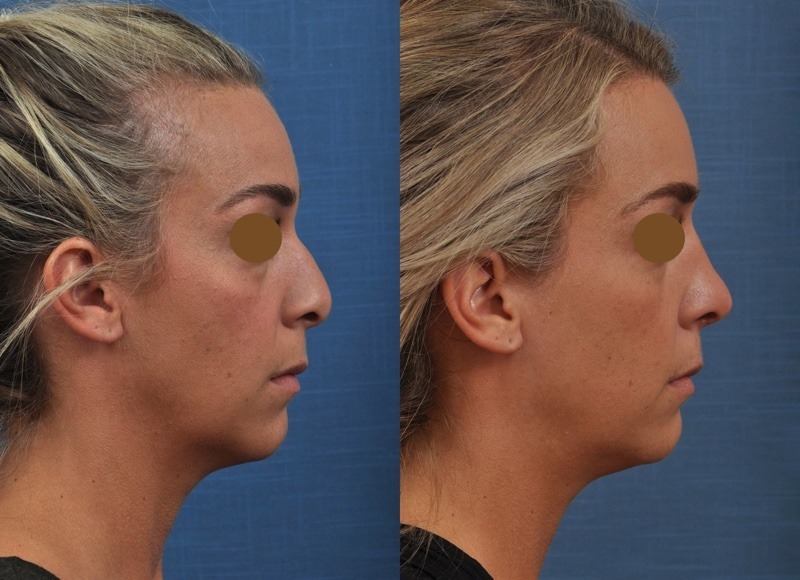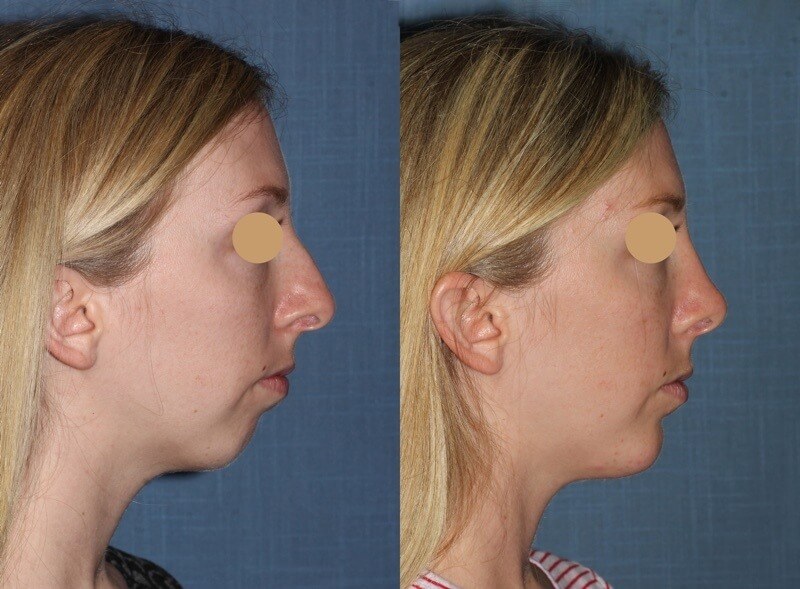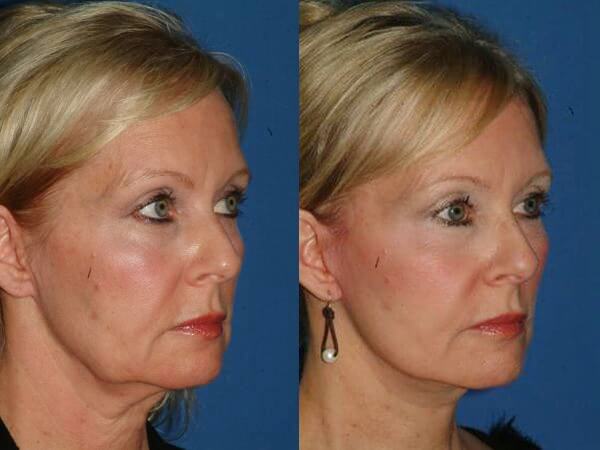Have you ever heard of “prejuvenation”? It’s a word used to describe “preventative rejuvenation,” a popular trend widely employed by millennials. In fact, earlier this year, The American Academy of Facial Plastic and Reconstructive Surgery (AAFPRS) reported a 47% increase in surgical procedures since 2013 with millennials (ages 22 to 37) leading the trends. They consider themselves proactive, making minor tweaks to the face as a matter of “self-care.” This group seeks surgical procedures combined with non-surgical procedures such as Botox and fillers alongside skin care products with SPF, exfoliating and hydrating factors to prevent signs of aging before they actually appear … aka preventative rejuvenation.
Dr. Phillip Langsdon, MD, FACS, of The Langsdon Clinic and past president of the AAFPRS, is a self-described conservative practitioner, supporting the notion of early skin care regimens, including the use of quality skin care products, whether it is a necessary medical procedure or a matter of making a person feel better about their skin quality. “However, I do not advise beginning Botox and fillers as preventative maintenance,” he explains. “I haven’t seen any research that demonstrates benefit when there is nothing to correct. If you are beginning to develop frown lines, then it may be time to treat. However, if there are no wrinkles or evidence of volume loss we do not advise treatment.”
Curious about additional trends and procedures that are on the rise in the world of plastic surgery, we asked Dr. Langsdon to tell us what he is seeing and what to expect from the results. His answers were surprising. According to Dr. Langsdon and a late 2019 AAFPRS survey, the top three procedures are sought by millennials and largely driven by the selfie phenomenon, which has caused an increased self-awareness of the face — a notion also referred to as the “Kardashian effect.” Check out what this nationally recognized plastic surgeon has to say about these top plastic surgery trends. He says that the 2020, and continuing into 2021, large uptick in all facial cosmetic surgical procedures may be because people are having more time at home, time to recover, and are reallocating expendable income for surgery instead of travel and entertainment.
Top 3 Plastic Surgery Trends
1. Rhinoplasty (Nose Surgery)
Rhinoplasty, or nose surgery, is the number one surgical facial procedure with 96% of facial plastic surgeons in the AAFPRS in 2018 reporting performing the procedure. A recent survey assessing the effects of rhinoplasty on attractiveness and personality revealed rhinoplasty improves perceived personality traits such as trustworthiness, approachability and likability. Additionally, rhinoplasty showed positive effects for “facial harmony, attractiveness, femininity for women and confidence.” Rhinoplasty is usually performed surgically, but there are limited nonsurgical injections that may help in specific situations. With recovery time depending on the depth of the procedure, more and more people are hoping for the nonsurgical option where fillers are used to make minor adjustment to the nose affecting the overall appearance of the face. However, Dr. Langsdon stresses that nose injections have a limited impact and can cause complications.



2. Revision Surgery
Revision surgery is the second largest category of procedures performed. Revision surgery, or treatments to reverse problems with injections or lasers, has become necessary because so many procedures performed are done so at the hands of inexperienced providers. Ninety-four percent of professional facial plastic surgeons in the AAFPRS report performing revision procedures. Dr. Langsdon emphasizes that the procedures in and of themselves are not the issue.
“The issue is not the name of the treatment; the issue is the way the treatment is rendered. The issue is the name and experience of the person holding the knife, needle or laser wand,” he says. While credentials can be important, a title doesn’t mean the person has a high level of experience with a particular treatment. In his opinion, no one can be an expert at everything. “It is imperative that treatment be rendered by highly qualified, licensed providers who have a high level of experience and good outcomes with the particular procedure one is seeking.”
Revision surgeries or nonsurgical treatments cover a broad scope of procedures with some being mild and some being extremely involved and intense. Dr. Langsdon stresses that selecting a physician or other provider with a proven track record is key to getting the right treatment with the desired results.
3. Otoplasty (Ear Surgery) & Chin Augmentation
Otoplasty, or ear surgery, and chin augmentation are the third and fourth most popular procedures he sees, also driven by the selfie phenomenon. “Millennials are seeking procedures such as repositioning their ears back and enhancements to the chin,” says Dr. Langdson. Such procedures are largely sought by those in their late teens to late 30s, but sometimes by people decades later in their lives.
Common Procedures by Patient Age
Though millennials are leading the market trends with prejuvenation treatments and anatomical alterations to the nose, ears and chin, there is still a large market for 30-somethings and beyond seeking rejuvenation treatments. Thoughtfully acknowledging the effect of genetic makeup on the rate of aging, Dr. Langsdon is reluctant to match treatments to specific ages, noting that many people can move through most of their lives with good skin care regimens and age gracefully. Instead, he shares the most common plastic surgery trends for each age range.
Late 30s and 40s
Mini lifts, eyelid surgery and some chin augmentation are often sought — all of which are surgical procedures. A mini lift most commonly involves the lower face only, however, some may opt for a forehead lift and not a lower facelift. A lower facelift corrects jowling and redefines the jawline, by tightening the skin in the lower two-thirds of the face. A forehead lift focuses on lifting the eyebrows. Recovery time ranges from two to four weeks. Mini facelift results generally last until the person’s age rate increases. Not all providers perform facelifts, so it’s important to see a professional with training, certification and expertise as a facelift surgeon.

Late 40s and beyond
Depending on the degree of aging, complete facelifts are often the best rejuvenation option for those in their late 40s and beyond. He says there has been a very large increase in facelift procedures since the COVID restrictions began. The results of a full facelift generally last longer, but Dr. Langsdon stresses that no surgery can stop aging, and tuck-ups are a normal part of maintaining the face. Though nonsurgical procedures are the first option, the facelift is the gold standard of facial rejuvenation treatments when dealing with sagging and bagging tissue. Recovery time lasts two to four weeks. The cost of the procedures vary, however, according to the AAFPRS a mini lift may begin at $4,000 and go up, while a full facelift ranges from $7,000 to $15,000.

Why Consult a Plastic Surgeon?
The most important factor in pursuing any facial procedure is the surgeon. It is imperative to ensure you have a board-certified surgeon, certified and licensed to perform the procedure you are seeking. Beginning the right skin regimen as early as your teens, designed to protect the skin from the sun and environmental factors, can make a world of difference in the way your skin ages. Also, having a good relationship with a surgeon you trust, who can take you through the ages and stages of aging, is key to ensuring you get the results you seek should you opt to have plastic surgery. While many decide to age naturally, a reputable, certified plastic surgeon can guide you through the best skin regimens, and nonsurgical and surgical procedures as they become the best course of action for you and your desired results.
Questions to Ask
If you’re ready to look into plastic surgery, be sure to ask the following questions recommended by the AAFPRS during your professional consultation:
- What procedure is best for me considering my desires?
- How long will the procedure take?
- What is the recovery time?
- What are the risks involved?
- Is post-operative medication necessary?
- What is the cost of the procedure?
- Tell me about your credentials and licensure.
- Tell me about your involvement with your industry’s professional organizations and the ways you stay abreast of the most recent trends and scientifically proven protocols.
It may be uncomfortable to ask such candid questions of someone with a degree and professional license in a such a specialized field of expertise, but given the fact that revision surgery due to botched procedures is the second most popular facial treatment, you should feel confident to humbly and gracefully seek answers to these important questions.
To learn more about plastic surgery treatments and procedures or to schedule a consultation, call (901) 755-6465 or visit drlangsdon.com.
All photography provided by The Langsdon Clinic.
This article is sponsored by The Langsdon Clinic.



















